Summarized from a consultation originally recorded on March 6th, 2025.
Annmarie Skin Care Skin Consultations are FREE, virtual group sessions, hosted live by our in-house skin experts, to provide personalized recommendations and directly answer any skin care related questions. Learn more about our skin consultations.
Kate – Annmarie Skin Care In-House Esthetician: Yeah, let me actually get into that really quickly. So I think more than one person asked this, but there was some confusion in the surveys about whether we use both the serum and the oil. And so I wanna speak to that because we recommend both. There are different products, and I know this gets confusing, especially with the Anti-Aging line, the Anti-Aging Serum and the Anti-Aging Facial Oil. They have basically the same name, so they feel really similar. The serums as a product and as a product type are much thinner.
We start all of our serums with an aloe vera juice base, and serums as a product type are generally going to be a thinner, more aqueous product. And this is intentional because what we can do with a very thin consistency product is this will penetrate a little bit deeper into the skin. And so this is where we're really focusing on what our major concerns are. This is kind of the treatment step treatment used in the sense of we're prioritizing what our active concerns are with a serum and with the thin kind of consistency of it, we're also supporting the hydration level of the skin. So when I say hydration, I'm speaking to the water composition, meaning that the lower layers of the skin tend to be supported more by water or aloe or hyaluronic acid, something that's got a thinner aqueous consistency.
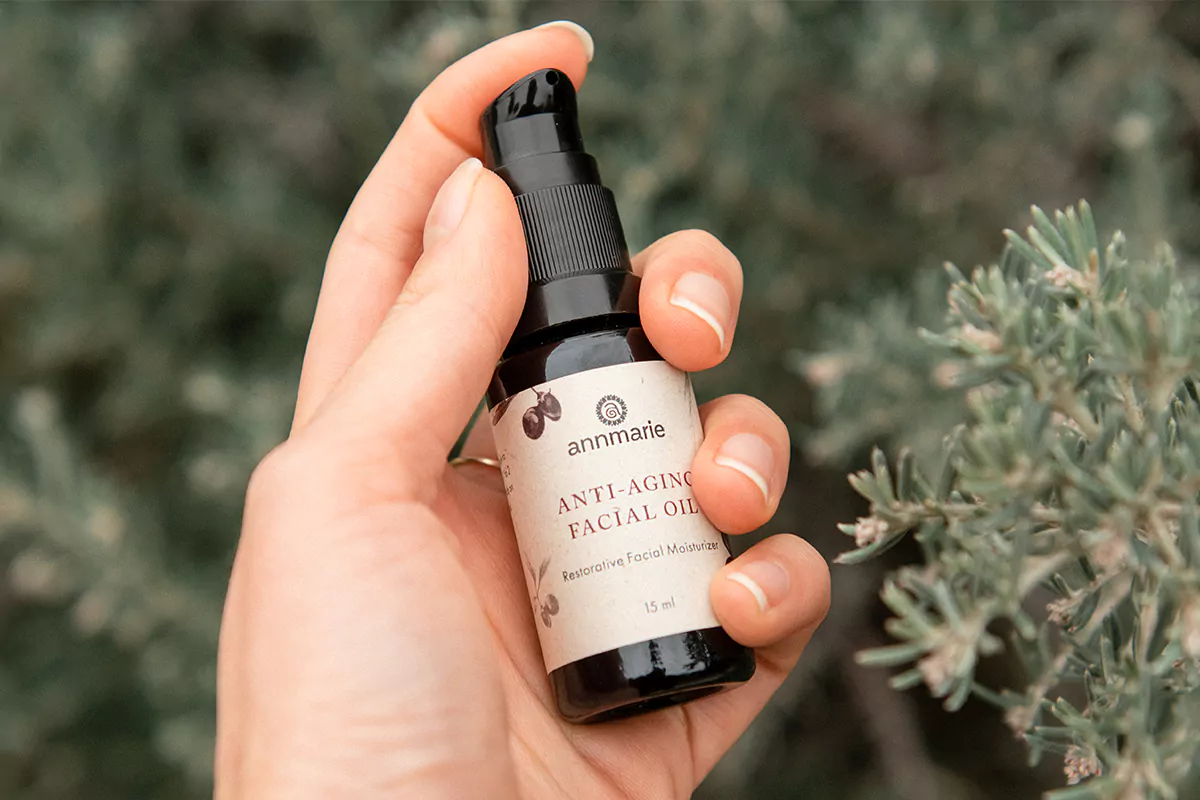
And the upper layers of the skin are supported more by a fatty oil-based consistency. And this can look like a moisturizer. There are, of course, creams and lotions on the market. We use oils as our moisturizing step, but if you use one without the other, you tend to still feel a little on the dry side. There are obviously exceptions. Usually people with pretty normal skin might be able to use one or the other. Usually it's the oil if they're using just one or somebody with really young skin that doesn't have, you know, too many needs going on and it's pretty balanced. So otherwise, yes. The serum and the oil, we do recommend both and in that order.
So your serum goes on first and then your oil goes on second. And as far as the pacing, you can kind of play with it. Sometimes people get really worried about, oh, is it, should I let it dry all the way? Should I leave it really damp? Somewhere in between. What's the sweet spot? And I think each person's gonna find what feels best for them.
My personal preference when I'm applying my products is I let everything stay damp throughout the whole routine. And it pulls everything in in a different way than if I let it dry. It does leave my skin a little bit less on the moisturized side, just slightly. I have dry skin and it still works for me, but if I was really, really dry, I might apply the oil after letting things dry a little bit more because it'll sit closer to the surface. So I usually recommend some kind of dancing with it, try leaving your skin damp and see how that feels. Try also letting your skin dry in between each step and see how that feels. Neither is right necessarily. It just totally comes down to preference. So does that feel a little bit clear? I know that was a super long answer, but I do like to kind of pull on that thread a little bit.
Customer: I have a question. Does the eye cream go on last?
Kate – Annmarie Skin Care In-House Esthetician: It does. It's not wrong if you apply it right before the oil. I have had this debate internally a couple times. The Anti-Aging Eye Cream is a little bit richer than the facial oils, and so I prefer the wear of it over the top of an oil. When you apply it before an oil, everything's going to be fine.
I just find that the oil takes a lot longer to absorb, and this area can look really glossy. And that's not my preference. So for most instances, I do recommend that you do your facial oil and then the eye cream on top. Yep. So let's talk about a routine a little bit, and I'm gonna be posting some links in the chat. I might also, I have some products with me, but not every single one. So starting at the top with your cleansing step. One of two is probably going to be most ideal for either one of you.
The first one is the Aloe Herb Cleanser and, and I think you had mentioned that you've used this one before. Iris, I don't know if you've used this one before. It's a really lightweight cleanser. It's got kind of a lotion feel to it. I like it for balancing the skin. This is great for the normal to dry skin types, the dry to super dry skin types. It's great for really sensitive skin. The feel of it is very soft and then when you rinse it off, the skin is just left super balanced so it doesn't leave a residue. Sometimes people are concerned with the coconut oil, whether it's gonna feel really sticky or oily, and I don't find that that's the experience. Skin just feels really balanced and so this is a really nice one. Do you like it? Yeah. Awesome. Have either of you tried the Phytonutrient cleanser? Let me talk about this one.
Customer: Nope.
Kate – Annmarie Skin Care In-House Esthetician: So the Phytonutrient Cleanser is part of the Wild Alchemy Collection, and you'll notice when I share this link here that the bottle is a darker color. It's this black color. The Phytonutrient Cleanser being part of the Wild Alchemy Collection, that whole collection tends to be a little bit more laser focused as far as addressing signs of aging. So it's not that the Wild Alchemy collection is better, it's not that it's like you have to use just the Wild Alchemy Collection. Just the, the foundational focus of the Wild Alchemy Collection is that it is more directly addressing signs of aging. So you can definitely intermix, use some Wild Alchemy, use some you know, we call the other collection, our Signature Collection.
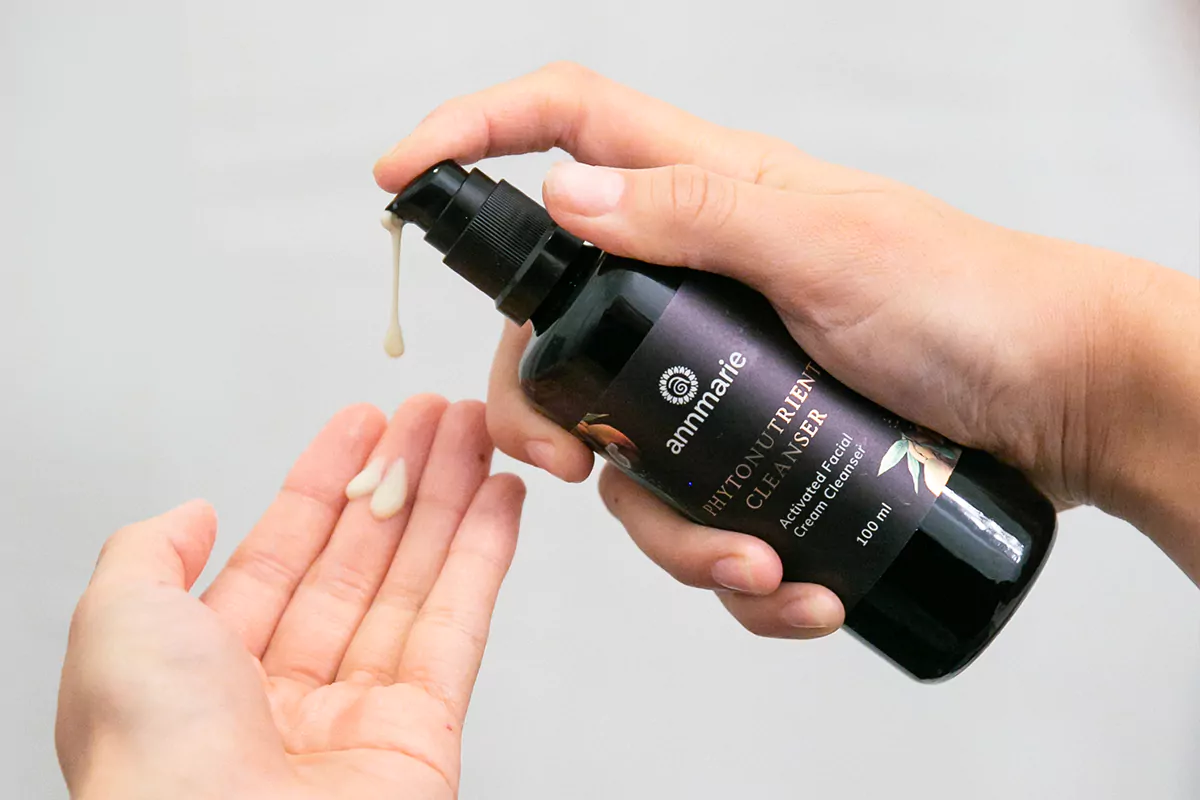
Both of those are gonna be great. One's not necessarily better than the other. The other thing with the Wild Alchemy Collection is it does tend to include more exotic ingredients. This is where we get the Wild Alchemy and oftentimes has a lot more steps involved with crafting it. So when we're looking at the Wild Alchemy Collection, the Phytonutrient Cleanser, the consistency of this one is a little bit richer. It's got this kind of fatty feel. One of the key ingredients is mango seed butter. So it's almost, it's almost gelatinous. It's like if you mix a gel in a cream, that's kind of what it feels like. It's still very moisturizing as far as the cleanser. So great for dry skin. Very supportive for signs of aging and generally more pronounced signs of aging. So if that's the appearance of deeper wrinkles or increasing. Definitely supportive for discoloration. We've got acai oil, we've also got apple extract. Both of those are helpful for darkened areas of the face. So if pigmentation is something you're working on. I like this one.
Customer: Would it make sense to maybe alternate using them or?
Kate – Annmarie Skin Care In-House Esthetician: Certainly an option. And so both for the price point, because the Phytonutrient is a little bit more costly sometimes people will alternate and do one in the morning and one in the evening. Also, if you find that you do get a little bit sensitive with it I've got several sensitive or rosacea prone customers who will use it and they might use it once or twice a week. And then use the Aloe Herb Cleanser the other times and, and that's a great way to go with it. So, yes. Good question. Any other questions about the cleanser before I start to talk about toners?
How you use both of these. I think you guys, you probably understand it's very straightforward. You wet your fingers, you wet your face. I do anywhere from three to five pumps. I warm mine a little bit but this is optional of course. And then I come and massage in upward motions. And I try to leave both of them on the skin. About 30 seconds. 30 seconds isn't a hard and fast rule, but it does really give it time to penetrate into the skin. And so 30 seconds is kind of what I shoot for, and then simply rinse it off, pat the skin dry, and then come in with the toning mist. Does that feel good? Any questions there? Okay, so toning this, the toning mist step. This is a step that gets skipped a lot and I get it 'cause because it's hard to kind of understand where this fits. Our toners are helping to provide this burst of hydration. They're all going to be kind of tailor focused for specific needs. It might be oily skin, might be combo skin, might be dry or sensitive skin. It'll be different per toning mist. They also are really kind of foundational support for the serum step. So when we're talking about the serums, all of the serums contain some variation of a humectant. And the humectant is an ingredient that finds moisture and pulls it to it so it can plump up. So when we've got the toning mist on the skin. Excuse me, there's already something like hyaluronic acid, these humectants to work with. And even if you're letting that absorb, there's just that kind of boosting to the plumpness of the skin. So we have three, I think for both of you. The one I'd recommend is this one.
This is called the Botanical Hydration Mist with Immortelle. It is my favorite for signs of aging for skin that's normal to dry or dry, or skin that gets sensitive. And every angle of this is really supporting all of those needs. So foundationally, this one is a hydrosol base. This is a hydrosol base and a hydrosol is already on the onset, a little bit more moisturizing than just aloe. Hydrosol is what they are when you create an essential oil via steam distillation. There's like the steam that's kind of percolating through the herbs. The hydrosol is like watery runoff. And so the feel of it is very soft. It's got a nice kind of almost slippery, buttery feel to it. It's not as heavy as an oil, so it's kind of in between. So for skin that's dry, this provides an instant kind of soothing to dry skin. The other aspect is that the hydrosols that we've chosen, rose and an immortelle, and both of these are florals that are known.
There's research behind them. They've been known for centuries to be these anti-aging soften signs of aging florals. Immortal actually is known as helichrysum a lot of the time. I think it might actually be listed in parentheses on the ingredients of helichrysum, but we went with immortelle because it gets that name from being the flower of immortality, which is like a way cooler legend than helichrysum. But from there we've got several different types of chamomile and frankincense. And, to kind of speak to the scents of this, this does smell a lot like the chamomile and the frankincense. There's a little bit of the floral, but it's really almost like a, like a beautiful tea, how this one smells. There is definitely a scent to it. But the scent in this case, the chamomile in the frankincense, it's primarily supporting sensitive skin. So this is a super quick soother for irritated rashy, you know, rosacea prone skin, but even without that, for signs of aging or especially more pronounced signs of aging and dry skin. This one is my personal recommendation, my favorite. And the application is very straightforward. Again, like the cleanser, this one, you just pop the top off. It's got this little mister top and you simply mist your face. I try to give it a good distance. You're gonna cover more of your face with a little bit more space in between it.
So really kind of playing with that and feeling what feels, what feels most comfortable for you.
And then from here, kind of like the serum oil conversation, you can really feel whether you're going to let that absorb completely, let that dry completely, or whether you're gonna leave it a little bit damp. And again, for me, I leave it a little bit damp. I like the way everything absorbs when I leave it a little bit damp, but it is not wrong.
It's not even that rebellious. It's just a different option to let it dry. And then we get into the serum step. But before I do that, I just wanna check in and see what questions might have come up about anything, toner, cleanser, anything so far?
Customer: I'm assuming you're gonna talk about the exfoliant type of and the resurfacing thing.
Kate – Annmarie Skin Care In-House Esthetician: Yeah, this is a great point to do that. A lot of times I'll do that at the end as kind of like the bonus products, but let's, let's shift a little bit and insert it here. So when you're exfoliating, you do wanna still cleanse your skin first. So as you fit that into your routine, it would come right after you're cleansing. So, cleansing your skin, rinsing your skin, and then exfoliating. Now, which exfoliate you went with is gonna kind of depend on your needs. For both of you, it sounds like you have fairly normal skin, you're kind of experiencing different needs. So I'm gonna expose you to a couple different options. The classic, the one that I'm a huge fan of, is called our Kaolin Micro Exfoliant. I'll share the link for you here so you can browse that. The Kaolin Micro Exfoliant comes in an aluminum tube. It is a BPA free lined, aluminum. And the texture of that is. I usually describe it as if somebody was like, oh, picture a facial scrub. That consistency that comes to mind is very likely similar to what we have in this. So it's got good grit to it, it's very textured. And exfoliating is a super important step for everyone's routine. The only exceptions maybe would be if you, you're quite advanced in age and your skin is really super, super thin, super, super sensitive. Otherwise, everyone is gonna benefit from the exfoliant. So when we're using this one, this is a true exfoliant. So some of our exfoliants we describe as polish. It's a little bit lighter. Some of them will describe it as a kind of resurfacing of the skin. They're a little bit deeper. This one's perfectly in the middle. It's got a good, you know, kind of grit to it. We use a crushed bamboo stem in this, and it's a rounded, crushed bamboo stem, so we're not scratching or tearing at the skin. And I usually recommend about once a week that we start with the Kaolin Micro Exfoliant. You can move up to more. A lot of people will use this about twice a week, but I want to start with just once a week and see how your skin does. Somebody who's kind of on the fence, like their skin's maybe dry sometimes or dry in certain seasons if they push it too far, their skin gets drier. Which makes sense 'cause we're exfoliating this, this upper layer here. So once a week is a good way to go. Good way to integrate that. Buff for about 30 seconds and then rinse the kaolin is also really nice on the neck and the chest. And so, you know, carrying that down. I also like it on the body, so if you're looking for a body scrub this is a nice body scrub back to the arms, all of that too. And then rinsing. And then we would kind of move in with the routines at the toning mist or you know, onward unless you're masking, which again, I kind of talk about towards the end. But we can insert this here. But that's one scrub option. Let's see. For your skin type, I suspect you could also handle this one. Let me share the link when it opens.
So this is an exfoliant that is using a honey derived lactic. This is called the Resurfacing Facial Exfoliant to really deeply exfoliate the skin. This is also specifically supporting uneven skin tone, lactic acid and the feel of this one is quite active. So if you do experience, you know, tenderness or sensitivity, you might move very slowly with this one if you invested in it all. Because it is designed to be tingly, it's designed to be warm. It's very quickly resurfacing the skin. Very quickly changing the skin. This one I usually recommend starting with once every 10 days just because it is a little bit more intense than just the scrub and how you wear the resurfacing. Facial exfoliant is similar to a mask, so you would cleanse your skin like normal, rinse everything off. And then I usually pump it on my fingertips. It comes out like a gel and then applies it to my skin and then lets it work on the skin. I think the decoration or the decoration, the directions describe having this left on the skin for upwards of 10 minutes, but you can rinse it off sooner and it is still working. Sometimes people are kind of adjusting to the feel of it and so they might start with three minutes. They might start with five minutes. Their first couple of rounds, they might not go the full 10 minutes. And then after 10 minutes, it's really kind of just peaked in its activity and then it's starting to fade. So there's not that much more that's going on after the 10 minutes. Usually people rinse it there. But that's definitely another option if you're wanting a deeper exfoliant there. And then, like I mentioned, from there you can mask even if you aren't exfoliating, if you are opting to use a mask, we would still recommend that you cleanse first. So cleansing. If you're scrubbing, use your scrub. If you're masking, use your mask. If you aren't using your scrub, you can still use your mask. You just wanna prep the skin. And I'll speak to two masks here. Lemme find the one.
The first one is super simple and super moisturizing. This is the Coconut Honey Mask.
The blend in this one. We've got coconut oil, we've got honey, we've got bees wax, we've got vanilla. It is very moisturizing. And this mask is usually what I'm recommending if I'm working with anyone who is reporting that they are using all of the right products, but sometimes their skin still feels dry. The feel of this one is just kind of this perfect supplement. Used anywhere from, you know, once to twice a week to help keep the skin very moisturized. And this is one that you can leave on pretty long. I think the directions say 20, 30 minutes, but with everything that's in it, a lot of times people leave it on longer and that is perfectly fine. It does get a little bit sticky as the coconut oil absorbs because then you've got the coconut that's closer, or excuse me, the honey that's closer to the surface. And then the other one. This one here, this is the Illuminating Pearl mask and that one is ideal for supporting brightening. It's got uva ursi in it. It's got licorice root in it. These are helping to actually fade the appearance of pigmentation. It's very moisturizing. Both of these are great for sensitive and dry skin. The pearl mask also utilizes a crushed pearl powder and that crushed pearl powder is very, very helpful for just leaving the skin with this lovely glow. I usually recommend the pearl mask for somebody who is getting married or they are gonna be in family photos or their daughter's getting married. Something like that just 'cause your skin is so glowy after using it. What questions have come up with those?
Customer: How do you apply the mask with your hands or with a brush?
Kate – Annmarie Skin Care In-House Esthetician: Both of these work fine with either. I will say the coconut honey mask I think is a little bit thick trying to use a brush. I tend to find that that one's much easier using the fingers. And then thing to note with that, well, with either of them, but primarily the coconut honey mask is that if you live anywhere that gets cool, this time of year is less of a concern. It's mostly like, you know, late later in the year. It can come quite solid because of the coconut oil. And so just setting the little jar, some warm water and then it really softens quite, quite a bit. But either fingers or a mask are perfect. I tend to use my fingers pretty much every single time for these, and, and it's perfectly fine. I do try to use a little spatula. And we do sell the spatulas. Let me share the link to our spatula. I think it's on our accessories page. And that's just a great way to keep it cleaner longer. And these ones don't really, because of the honey in both of them, it's not as likely that they're gonna experience microbials or go moldy unless you're putting something that is actively molding in it, but it's possible. And so we recommend keeping it as clean as you can. This is a little cosmetic spoon that is free, I think. Yeah. And so as you're browsing and if you're getting a mask, you just add that to the cart. So that's a great way to go. What other questions can I answer?
Customer: So is it mainly for just moisturizing the skin then, and like you said, making it glow like the illuminating Pearl mask?
Kate – Annmarie Skin Care In-House Esthetician: Pretty much. The illuminating Pearl mask does have some ingredients to help brighten. The Coconut Honey mask is primarily supporting, moisturizing the skin, which can help in other areas. It can help a lot with fine lines, especially if, if your skin's dehydrated, which is true for the illuminating Pearl mask also. But yeah, these, the primary functions of these are supporting moisturizing and the glow of the skin with the illuminating Pearl mask, also having the brightening component to it too. So they are, in my opinion, a lower priority as you're kind of allotting, you know, what is a high priority? I usually suggest the serum and the oil as the higher priority items. They just tend to be the best bangs for your buck. And the formulations that we have are so thorough. Not that the masks aren't, but these are really directly addressing things like dark spots and discoloration and fine lines and drooping with the active ingredients that are in the serums and the oil. So those are usually the high priority items. And then I'll typically say, you know, you're toning this and cleanser next, and then any other items, whatever feels like a high value item for you there. Either a mask or a scrub or an eye cream, boosters, whatever. In that, in that order. Awesome. So we've cleansed the skin. If we're scrubbing, we've scrubbed the skin. If we're gonna use a mask, we've masked and we've rinsed that off. Then we've done our toning mist, and then we get into our serum step and we have several serum options. It feels like the serum family just keeps, keeps expanding. And so I'm gonna speak to a couple of them, but if there's one that I don't talk about that you're like, oh, I'm really curious. So I really am wondering, then just ask and we'll get into that one. I do like to mention the anti-aging serum just because it's so classic. This one is ideal for pretty much any skin type. There isn't really a skin type aside from really, really young or really, really oily that aren't gonna benefit from this. This one uses hyaluronic acid. This is a huge, huge component of this, the hyaluronic acid. They also have this lovely floral blend, and I think that this may have been one that you had tried, Ian in the scent we're a little bit maybe not your favorite. It does smell a lot like the rose and the other herbs that are in that one. Another really great option. I'm gonna speak to baby fur. Three more. I always try to prioritize, but sometimes we talk about all of them. Posted that one in the chat there.
And the next one that is, I think top of mind is the Citrus Stem Cell Serum. This one is particularly supportive for drooping skin and for pigmentation.

This one utilizes orange derived stem cells and stem cells are really helpful for the lift and the tautness of skin. This also utilizes both licorice root uva ursi. And these three brighteners are targeted skin brighteners. So they brighten the skin kind of differently than like a vitamin C. Vitamin C is also super important, but what these are doing is they're building up on top of a pigmentation. They seek out activated melanin and some kind of compound, and then they help that to go back to sleep. So for lots of sun damage or darker sun damage, or the really brown deep sun damage, Uva ursi, licorice root, and berry are all very potent brighteners. Now a thing that I do like to note with brighteners with whether it's the serum or the wild fruit serum or the mask, these brighteners, they accumulate in the skin. And so the turnover time to see a difference tends to be anywhere from four to six weeks. Because what's happening is these are absorbing in, they're getting into the lower layers and then they're changing the skin as that skin is moving up towards the surface. Your natural skin cell turnover is about a four to six week process. It slows down as we age, and so it tends to be at the end of the first skin cycle, full skin cycle that you start to notice a difference. So I note that because sometimes people will start this and then, you know, two weeks in they feel like I didn't notice a huge difference or feel a little discouraged. And this has to do with how this is working in the skin. And it does take. Consistency and it does take time to notice it and then it compounds. And so as you're starting to see that, you're going to see that progress more and more and more as you're continuing to use this product or really any brightener in the skin. It is the lowest amount of additional moisturization. So we do have hyaluronic acid in that one, but it's a pretty small amount. So I note that in case somebody's super, super dry. The next one that I'll reference, it might be a better fit for you. Where is the next one? Ah, yes, the Wild Fruit Serum. And so the citrus stem cell serum, the scent of that one smells a lot like citrus. It's, it's, it's pretty single note as far as what the scent is. It is about the same potency of the other products. I don't find that it's necessarily less strong. But, citrus is the main scent of that one.
The next one, the Wild Fruit Serum. This is usually what I'm recommending when I'm working with anyone who's mentioning fine lines, sun damage, drooping uneven tone, uneven texture. The wild fruit serum tends to catch a lot of signs of aging in one little package. We've got Uva ursi here, got goji berry here. So both of these are natural brighteners. We've got hyaluronic acid, so we're plumping up the appearance of fine lines. We've got stem cells in the Wild Fruit Serum. The stem cells, of course, are helping with the lift, the kind of firm look people strive for. And the stem cells are Madonna Lily derived in this one, it probably goes without saying, but any stem cell in any of our products is a plant derivative. We don't use any bovine or other sourcing for the stem cells, so stem cells. In that. We also use resveratrol, which is incredibly helpful for evening the appearance of tone and the texture. And then a pretty key component of this one is the Kakadu plum. And kakadu plum is very vitamin rich, but specifically very vitamin C rich. And so we get this overall brightening, utilizing the vitamin C in the wild fruit serum. So a lot of times the wild fruit serum is kind of the next step up. It's like the graduation from either the anti-aging of the citrus stem cell, 'cause it covers those needs and then it is expanded in the needs that it is addressing. It's my personal favorite. I do love this one. The scent of this one smells a lot like the plum, just kind of lightly fruity. It's pretty sweet smelling, but again, not overly so. So, that's another option.
Let's see, from here, I wanna make sure to speak to the newest serum. We launched the Activated Hemp Serum and I'll link it and also show you.
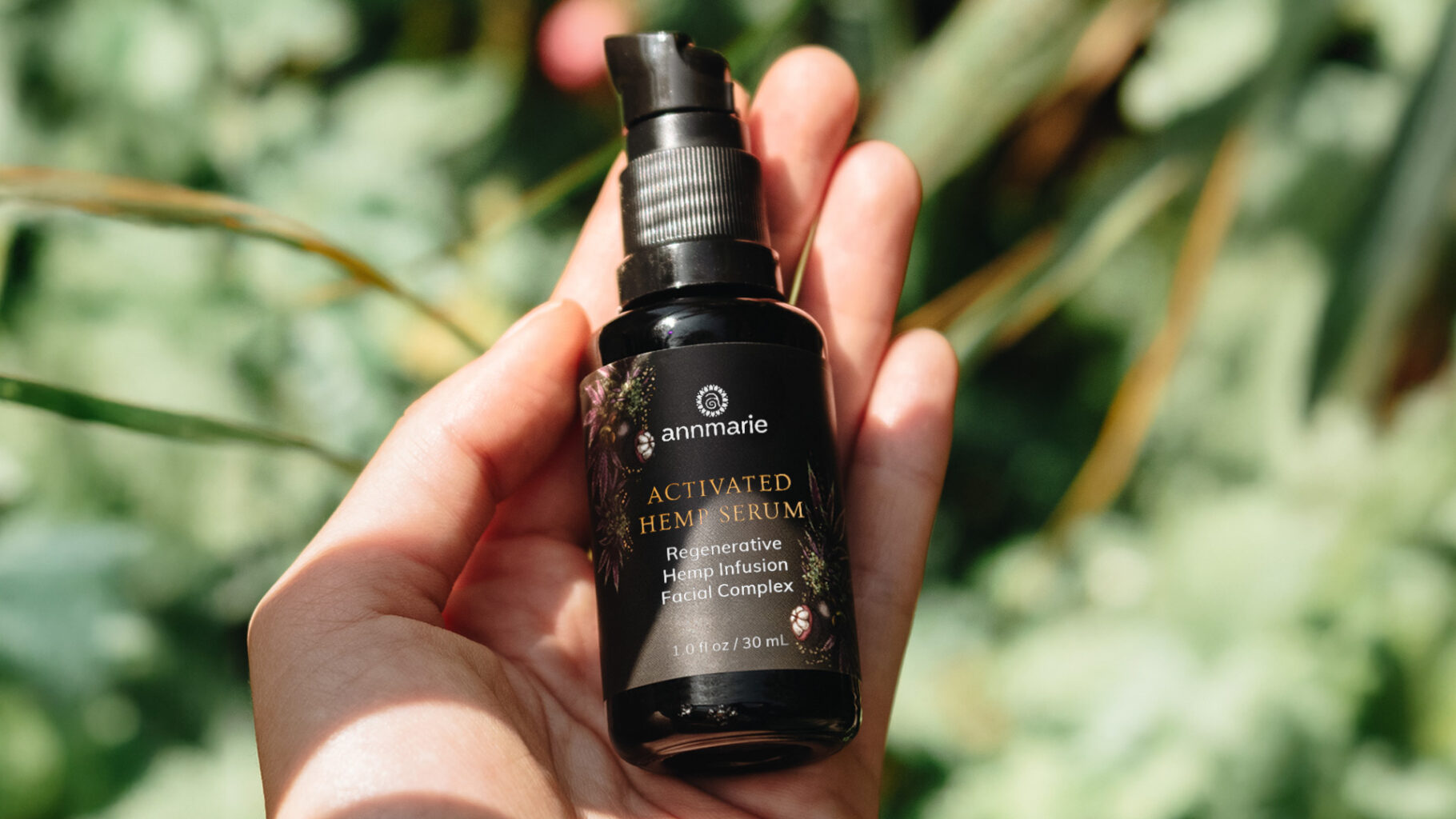
This is actually a reformulation of a product that existed and so if you've shopped with us for a while, you might remember the Activated CBD serum or when we launched the CBD serum. The formulation of the hemp serum is very, very similar. The primary change is that we aren't using CBD, we're using a broader hemp oil which was beneficial for a lot of reasons. But the consistency of the hemp serum is very creamy. So if you have super dry dry sensitive signs of aging, all of these, the hemp serum supports pretty directly. Hemp and CBD was, it did this as well, but hemp includes CBG and this one is particularly supporting areas that are breaking down. And so this can look a lot of different ways. This can be the appearance of fine lines, this could be the appearance of deep creasing. Obviously sensitivity is a huge one with CBD or CBG or hemp. All of those. And then with the formulation, we've got that creamy, smooth texture. And so this one is again, helpful for the feel of those kinds of needs there. Dry, aging, sensitive, especially dry, especially sensitive. These are really good for this is, this is an, an option and unlike the former serum that we had, we had the CBD serum. You used to have to go to a whole different site and go through a whole process. This one's available on our main website. This one's available for all the discounts and promos we do through our email newsletter. This one, there aren't the same stipulations that the other one had. So that's another option. So, but I think that's complete on what I have with serums, but I know I didn't talk about them all. So let me see if there are questions or if there are any ones that I didn't speak to that you'd like me to get into.
Customer: When you mentioned the scent of something, it made me think of the scent of facial oil.
Kate – Annmarie Skin Care In-House Esthetician: Yeah. Yeah. And when you say facial oil, are you referring to the Anti-Aging Facial Oil? Yeah, that one has a way stronger herbal scent. A lot of it is the jojoba in here, but a lot of it is the herbs in it as well. I usually recommend one of two if you want the effects of the anti-aging, but that scent is just not working. Another really lovely one is the Rejuvenating Facial Oil, and I'll pull that one up here. There are two, so I'll share this one first. The Rejuvenating Facial Oil smells a lot like the blue tansy that's in it. I think it's definitely lighter. The Anti-Aging like I said, is pretty fragrant and so enough people love the scent of it that we stick with it.
Including Annmarie, who's got a pretty big say in the product. But and, and there are also a fair amount of people who just feel that it's great the way it works, but the scent of it doesn't work for them. The Rejuvenating Facial Oil, it is a different product. That one is a little bit more tailor focused on specifically addressing specific signs of aging.
That one has mango seed, which is very directly softening the skin and softening the appearance of fine lines. Blue tansy and butterfly pea flower are really kind of what add to the scent component here. And Blue Tansy is very light. It's kind of like a blue flower basically. And so the scent of that one is way more appealing to, especially if somebody is not loving the scent of the Anti-Aging Facial Oil. And then the effects of that one, that is kind of our top tier as far as addressing signs of aging. The next one, another one that is a hugely popular one, is the Herbal Facial Oil for Sensitive Skin and I'll link that one as well. The Herbal Facial Oil for Sensitive Skin is specifically an unscented oil. So we do use essential oils in pretty much all of our products with purpose. So they're used in the oils, they're used in the creams, in the lotions, in the cleansers because they're adding to the effectiveness in a specific way. But we know that for some people's skin types, they just cannot handle essential oils, especially in the moisturizing step, which is why this one, it doesn't have any essential oil in it. Now, we used to call this one the unscented facial oil, and then we got a lot of feedback that it still smelled, it smells like herbs, so it's a grape seed oil, and then we've steeped into it camelia seed, Sasha Inchi, and squalane just like a couple other herbs that help soothe the skin, but they aren't void of scent. The product itself is just void of added essential oils. So it's very earthy, it's super light. But there is some scent to it, which is why we changed the name to the herbal facial oil for sensitive skin. So one of those two are definitely next steps as far as finding a good oil, if the scent of the anti-aging is just not doing it for you.
Another option is to kind of mix them. So let's say you love the feel of the anti-aging facial oil, but the scent, you just can't handle it. You could do a full pump of the herbal facial oil and then a full pump of the anti-aging facial oil that can dilute the scent. You still get the richness of the Anti-Aging Facial Oil but it's kind of like a softer scent obviously as you're applying that. So that's another way that sometimes people will kind of, you know, meet the needs of, of using the product and, and also meet the needs of not having such a strong scent on the face. But you can also just go in a different direction and do either the herbal facial oil or that rejuvenating facial oil.
And those ones are good too. Any questions about what the oils are or maybe why we use oil? These are the moisturizing steps, so. Yeah.
Customer: Yeah. I'm, I'm just wondering like of all your serums would the Wild Fruit Serum be the one that's best for wrinkles?
Kate – Annmarie Skin Care In-House Esthetician: Definitely the best for drooping!
Customer: I, I was gonna say, and I don't think you mentioned the night one.
Kate – Annmarie Skin Care In-House Esthetician: One that you have that's for nighttime. We do have one for nighttime serum and I do love it. So thank you for bringing it up! To answer the first part of the question, the Wild Fruit Serum is the best as far as addressing the appearance of tautness of the skin. The Wild Fruit Serum is a very, very not just popular product. It's got a high purchase rate, but it's also got a high repurchase rate. And I think what we're finding is that people are using this, they're getting the effects that they want, and they are investing in it over and over and over again. The Wild Fruit Serum is kind of, it just catches so many different angles of concerns with aging in a way that not all the others do, not that the others are, you know, blessed and awesome. The Wild Fruit serum just covers so many bases, so it's got the reserve withdrawal, which is super helpful for smoothing the skin texture, fine lines. It just is a kind of skin, smoother skin softener. And then the stem cells and the stem cells are really where you get that very pointed, very taut lift lifted effect to the skin. It's working in a different way than the citrus stem cells. The citrus stem cells that are in the citrus stem cell serum also work, but the citrus stem cells don't have quite as much of the support of the hyaluronic acid that are found in the wild fruit serum. And so it's a little bit stronger of a feel with that particular angle of it.
And then the Activated Night Serum, let's totally talk about that one. So the Activated Night Serum is a facial serum. So this goes in that facial serum spot. You're using it only in the evening. And the primary reason for this is because it uses an ingredient called our bioactive a complex.
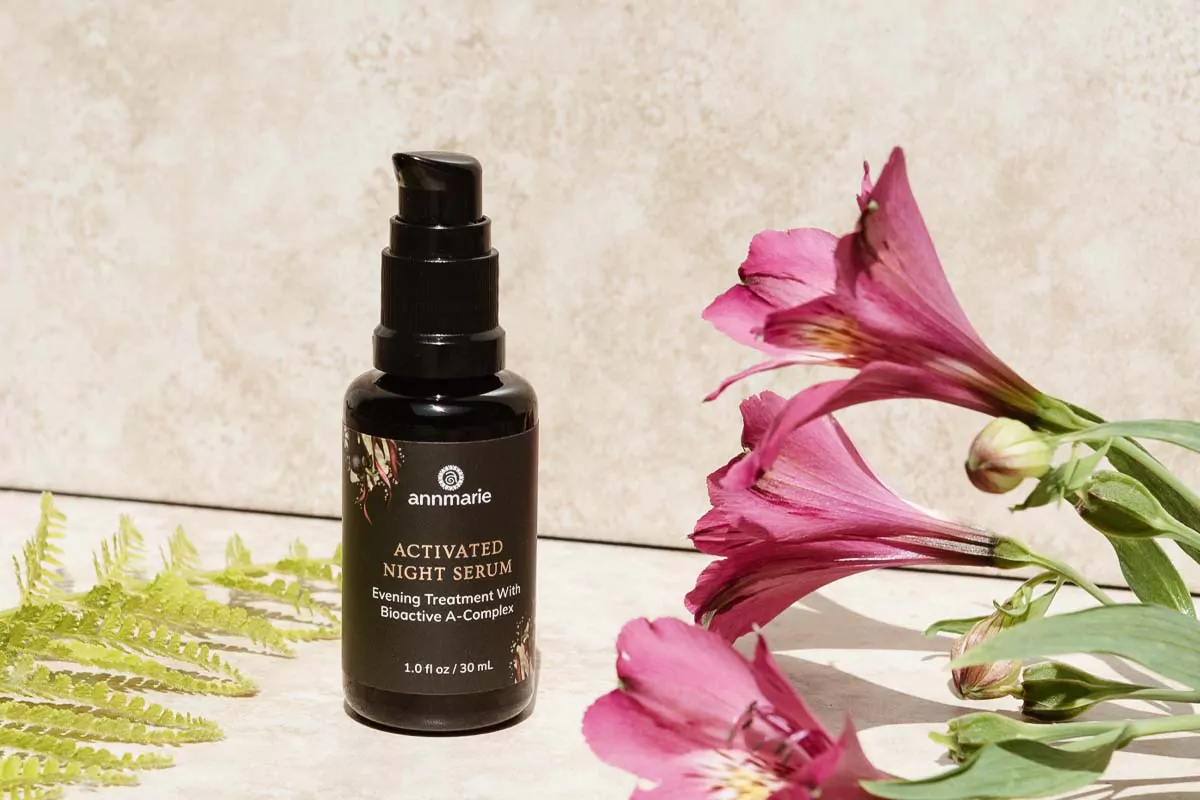
And the bioactive a is a retinol alternative. To boil it down quite a bit, it's what we opted for, we wanted to offer a retinol variation. It's not a retinol. It's not a retinol, it's not a vitamin A. It still is providing this very smooth effect to the skin. Pretty much anywhere where you might consider a retinol, a traditional retinol. This is going to slide in perfectly. We also love this. So this is a made safe ingredient, bioactive as it also just works in a different way. It is still pretty active though, so if you are really sensitive, you can still use it. You might just use it once a week or you know, upwards of a couple days a week instead of every single night. Like most people do. Yeah, but this is also a night serum because of the blend of this, we picked these kinds of potent anti-aging ingredients, superoxide dismutase astaxanthin. Oh yeah. Black cumin seed because of the way they work with your body while it's in its rem cycle. So when you sleep and you hit your REM cycle, ideally you're hitting your rem cycle, your skin kind of softens and expands. And so it's a really prime time to kind of have both a softening experience and exfoliating experience and these anti-Asian that can really drive themselves into the skin. And this is the culmination of all of that. So the Activated Night Serum is super helpful for the appearance of fine lines, really helpful for lifting. It's also helpful for pore size if you're somebody who's really struggling with pore size or you have larger pores and you're just not really seeing a difference when you would like to be. It's a pretty quick, quick shift. But just a quick refining of the skin in general. It does increase photosensitivity a little bit, so we don't recommend it in the daytime.
We don't want you to wear it and then go out into the sun. And then we also want to make sure that you're wearing your sunscreen. We have our Sun Love, it's a sunscreen product that we would recommend at least two mornings after. Some people just wear it every morning and, and it's great. But at least two mornings after to protect the skin while you're using the Activated Night Serum.
Customer: So, yeah.
Kate – Annmarie Skin Care In-House Esthetician: Any questions about that?
Customer: Which sunscreen would you hold up? Mm-hmm. Which one?
Kate – Annmarie Skin Care In-House Esthetician: Yeah. This is our sunscreen. It's called Sun Love. Yep. Question.
Customer: Yeah, I do have about these products is that I could never figure out how much is left in the bottle because it's so small, an opening and trying to look down inside. It's just really hard to tell. 'cause I, I keep thinking, you know, just by the feel of it, it feels kinda heavy, but yet there's no way I've known how much it's still left.
Kate – Annmarie Skin Care In-House Esthetician: Yeah. I've got a really good tip for you. So, with your product in, in the little pumps and the jars and all of these, if you untwist it and pull your tubing out, you can usually see based on the tubing, there's, this is kind of the level of what is left. It's often a little bit lower than this because the suction of this will pull it up into it. So I would say this probably is up to about here. But that's a, it's a pretty good indicator of how much you've got going on in the bottle still.
Customer: Oh, I see. I was looking at the eye cream, which was a creamy one, which you can't see through…
Kate – Annmarie Skin Care In-House Esthetician: Oh, that's a good point. You can't really see. Another thing I've recommended is if you're somebody who has chopsticks is doing kind of like a dipstick test. Yeah. So sticking that in and just seeing how far that goes up, you know,
Customer: That's a great idea to use a stick. Yeah.
Kate – Annmarie Skin Care In-House Esthetician: Yeah. And then of course the chopsticks, you if, unless there would, in which case you could toss them or recycle 'em, but a metal or other type of chopstick you can wash and just use it like normal. So that's a great way to go.
Customer: This Anti-Aging Facial Oil that I lifted out, it's completely full of. Of oil. Mm-hmm. Does that mean that it really is, or did it, did it get pumped up into the tube whenever I squeezed it?
Kate – Annmarie Skin Care In-House Esthetician: Yeah, that's, I, it's hard for me to say, I don't know with that one, if you just pumped it like within the next, the last couple hours, it could still be, you know, towards the top. You might need to let it sit and with, and not touch it.
Customer: Probably, probably the stick method would be best.
Kate – Annmarie Skin Care In-House Esthetician: It's pretty foolproof doing the dipstick like a chopstick or, you know, some other variation or straw or something like that. It is a pretty good way to see it. Definitely leave your product level, you know, it probably goes without saying, but that will be the, the easiest way to see what's going on inside it. Perfect. Okay, so we talked about the serum, we talked about some oils. We mentioned the sun. Love briefly. That's our sun grade. What other questions can I get answered for you all? Is there anything that I haven't gone over, gotten into that feels incomplete or like we want to talk about? I know we talked about eye cream.
We could definitely get into that a little bit more. Should we, shall we?
Customer: There was another eye, let me think of where I wrote it.
Kate – Annmarie Skin Care In-House Esthetician: Was it the eye serum?
Customer: Yeah, there was an eye serum. Yeah. Is that thicker or better anyway for like, yeah, let's talk about the, I have wrinkles down under my eyes which one would be best for something like that.
Kate – Annmarie Skin Care In-House Esthetician: So probably actually a combination and I'll talk a little bit about how they're different and then you might decide one or over the other, but I think that the pair of the eye products could be pretty helpful. So the eye serum, the Fruit Ceramide Eye Serum, I put a link for that in the chat here. It is a thin consistency, so the consistency is very similar to facial serums, like the Anti-Aging Serum or the Wild Fruit Serum. It's just kind of got that thin feel to it. This one is really ideal for the appearance of creasing, specifically around the eyes. And so if that is what you're experiencing under the eye, this is where that Fruit Ceramide Eye Serum can be really helpful. Now because it's a serum consistency, we wanna apply this either before or after our facial serum. It's not super finicky which way you go if you do it right before or right after. But definitely before the facial oil. Because this is a very thin lightweight feeling with both of the eye products. You don't need to go all the way up or down to the lash line. So I do, I tend to pump about a half a pea size, kind of warm it in my fingers, actually. I usually do my ring finger and then I will pat or press along the orbital bone. And usually go all the way around. With something like this, you might concentrate more on the areas that you are working on and then any excess, bring it all the way around. The eye serum, I tend to recommend if somebody's pretty concerned about the eye area, if they're actively working on creasing or drooping it's not as much of a maintenance or preventative product as it is like an active treatment, active addressing product.
Now, the Anti-Aging Eye Cream, this one, and I'll link this one too. It is richer. And so as we kind of talked about, I do recommend that this goes over your facial oil. I'll share the link to it too. This one has a pretty broad ingredient composition, but it does include ingredients like stem cells. This has coq 10 and cucumber distillate. Coq 10 is great for strengthening. I'm a huge fan of it for the lift and the strength here. Which by strength I just kind of mean the bounce back. Your skin's got a little bit more return to normal or to its default than staying in a facial expression with an ingredient like coq 10. And then the cucumber distillate is helpful for puffiness. And so especially as we age, we can start to get puffiness under here that can exacerbate the creasing that's already naturally right under this very thin skin. That cucumber distillate can help to kind of keep that puffiness nice and low. So that's another tool.
This is our Gua Sha. This is a great tool also for helping with puffiness under the eye.
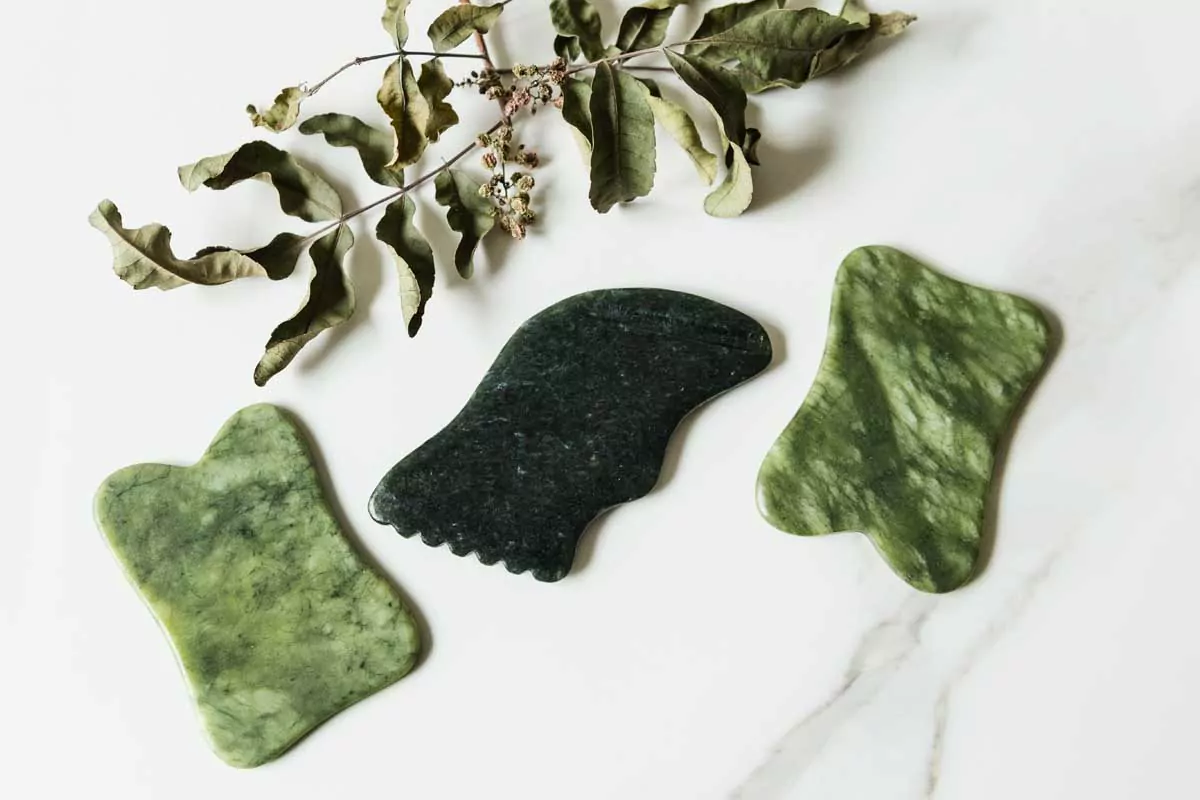
And you could do, I mean, you could even do what I'm doing. Mine's really cool. The temperature of this is really cool. And with it being a jade, a certified neph, right, it's gonna hold onto that cool temperature. So this is also helping with puffiness. But, but there's a whole like, you know, anywhere from five to hour long minute routine that you could do with the Gua Sha that can be helpful for lift in the whole face, but also in the eye area here, other than this pressing, and I'm just using it for the temperature, you wanna make sure you've got a medium, so an oil or a cleanser or something slick on the face for the Gua Sha. Otherwise you're pulling or dragging on the skin. So in your instance, I think that both of these could be pretty fantastic for the eye area, shifting the eye area, but the serum and the cream. But I mean, you might prioritize one or the other and that's good too. So, yeah.
Customer: Would it be good to use one morning and one night like that?
Kate – Annmarie Skin Care In-House Esthetician: That's definitely a way to do it. I feel like the serum and the eye serum really wants something over it. Usually, if I'm recommending a routine, I will recommend it if you're going with just one product in the routine that is the eye cream. I find that the serum, the eye serum sometimes doesn't wear as nicely without the creamy texture over it. And so that's not necessarily wrong. I just find that sometimes when people try to do that, that eye serum doesn't lay as nicely. So, I mean, try it. Definitely you could definitely do one in the morning and one in the evening. I don't know which I would recommend for which, honestly, maybe the eye cream at night and the serum in the morning. It's another one that you can play with and see what wears better. But yeah, explore it, see how it feels.
Customer: Are you saying that it would be good to put the cream on top of the serum during the day and at night?
Kate – Annmarie Skin Care In-House Esthetician: That's what I would recommend. If you're okay. Yeah. Especially so if your primary focus is like changing the skin and changing the skin as quickly as, as, as the table, we don't wanna force the skin or rush it. Doing your cleanser, your toning mist, your eye serum, your facial serum, your oil, your eye cream, morning and night. So getting the potency of the eye serum and the eye cream in both of those routines will be the best bang for your buck to change the skin. Yeah. Beautiful. Final questions. I feel like we've covered a bunch of stuff.
Kate – Annmarie Skin Care In-House Esthetician: Okay. I think we will wrap up if there aren’t any additiona questions. Thank, thank you very much.
Customer: Thank you very much. I really learned a lot. I really appreciate your help.
Kate – Annmarie Skin Care In-House Esthetician: Yeah, good, good. Awesome. Thanks very much. I hope you have a great rest of your day!e.
Want to join us for our next skin consultation? (It's totally free!)

Our team of experts has been on a mission to inspire beauty, health, and wellbeing, and we believe there's no better way to do this than through directly sharing our knowledge and passion for natural skin care.
Join us for a live session with one of our licensed estheticians where we'll explore the power of organic, bioactive ingredients, how they interact with your unique skin type, and how to incorporate them into your routine for optimal benefits. You'll walk away from this consultation feeling empowered to make informed decisions for your skin's health. Our in-house skin experts are eager to answer your questions, dispel myths, and share tailored advice for each participant.
By signing up for our live consultation, you'll not only gain access to the latest insights in organic skin care, but also receive exclusive skin care deals only available to those who attend! We can't wait for you to join our community as we share our love for organic skin care with you!
HOW TO SIGN UP
1. Simply, click the button below to sign up for the day that works best for you and your skin type.
2. Select your desired date and time, and click “Next”
3. Enter your contact information (your name and email), and click “Schedule Event.”

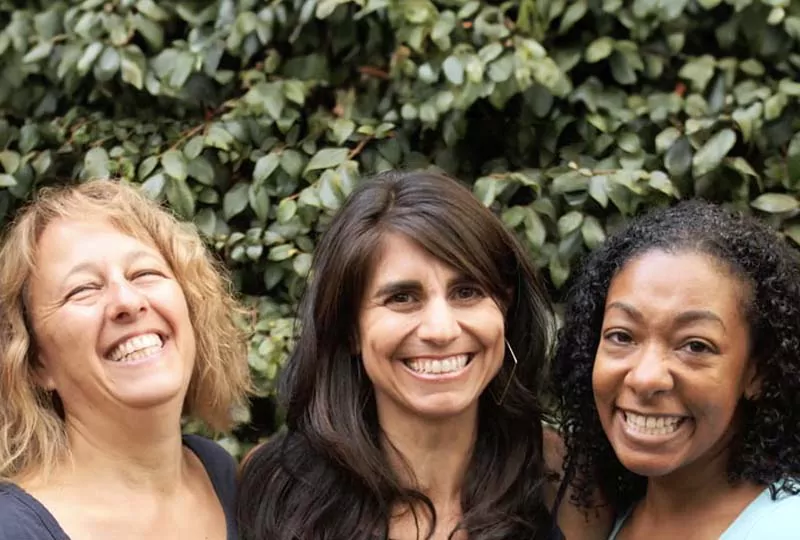
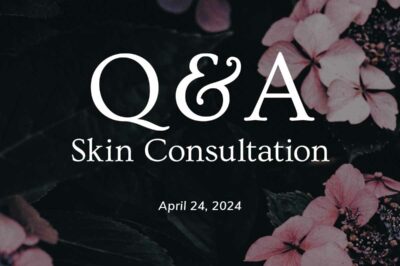

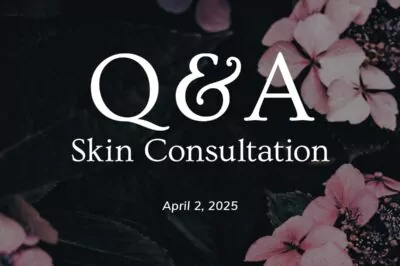



Leave a Reply